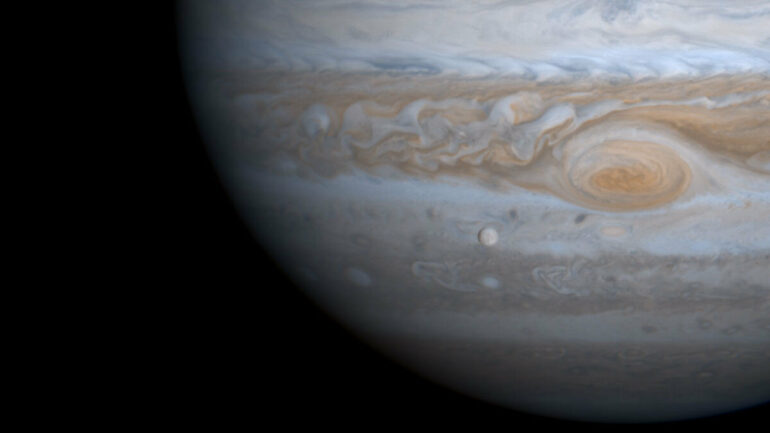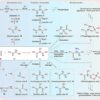Discovering that many of the large moons in the outer solar system may host significant subsurface oceans of liquid water has been a key advance in planetary science. These moons represent some of the most promising habitats for life beyond Earth, but their hidden nature makes direct study difficult.
These oceans appear to be tens or even hundreds of kilometers deep, bounded at the top by a thick, icy shell and at the bottom by a source of geothermal heating. A key element to understanding their nature is to deduce the patterns of ocean circulation, because it is the ocean that transports heat, salt, and potential biosignatures to the surface, where they could be detected by future space missions.
Although some previous studies have simulated the dynamics of subsurface oceans, those calculations have relied on parameters that are poorly constrained by observations. In a new study published in the Journal of Geophysical Research: Planets, Bire et al pursued a novel approach by casting their simulations in terms of a dimensionless number—the natural Rossby number, which is a ratio of buoyancy flux, moon rotation rate, and ocean depth—for which observational constraints do exist.
The authors present a series of simulations that explore a wide parameter range of ocean depth, moon rotation rate, and driving heat flux. In the small–Rossby number regime likely appropriate for icy moons, the simulated moon’s rate of rotation has a strong effect on the dynamics of the subsurface ocean. This stands in contrast to the currently accepted model.
Consistent with arguments rooted in well-understood rotating fluid dynamics in a spherical shell, the ocean’s circulation breaks into two regions. At higher latitudes, convective plumes extend upward parallel to the moon’s axis of rotation from the bottom to the top. But at lower latitudes, water is carried around the moon longitudinally and interacts less strongly with the ocean floor. This flow pattern likely dampens how efficiently geothermal heat from deep within the moon can be transferred across the ocean up to the surface. Therefore, equatorial regions are less efficient than polar regions at heat transport, with important implications for the thickness of the ice shell at the surface.
According to the authors, turbulence created by the global convective process likely led to the creation of bands of alternating ocean currents, similar to the mechanism that generates the colorful zones and belts found in Jupiter’s atmosphere. In fact, the general circulation pattern found within the oceans of these outer solar system moons may bear remarkable similarity to that of the Jovian parent.
More information:
Suyash Bire et al, Exploring Ocean Circulation on Icy Moons Heated From Below, Journal of Geophysical Research: Planets (2022). DOI: 10.1029/2021JE007025
Provided by
American Geophysical Union
This story is republished courtesy of Eos, hosted by the American Geophysical Union. Read the original story here.
Citation:
Dynamics of ocean worlds likely controlled by their rotation (2022, May 9)



